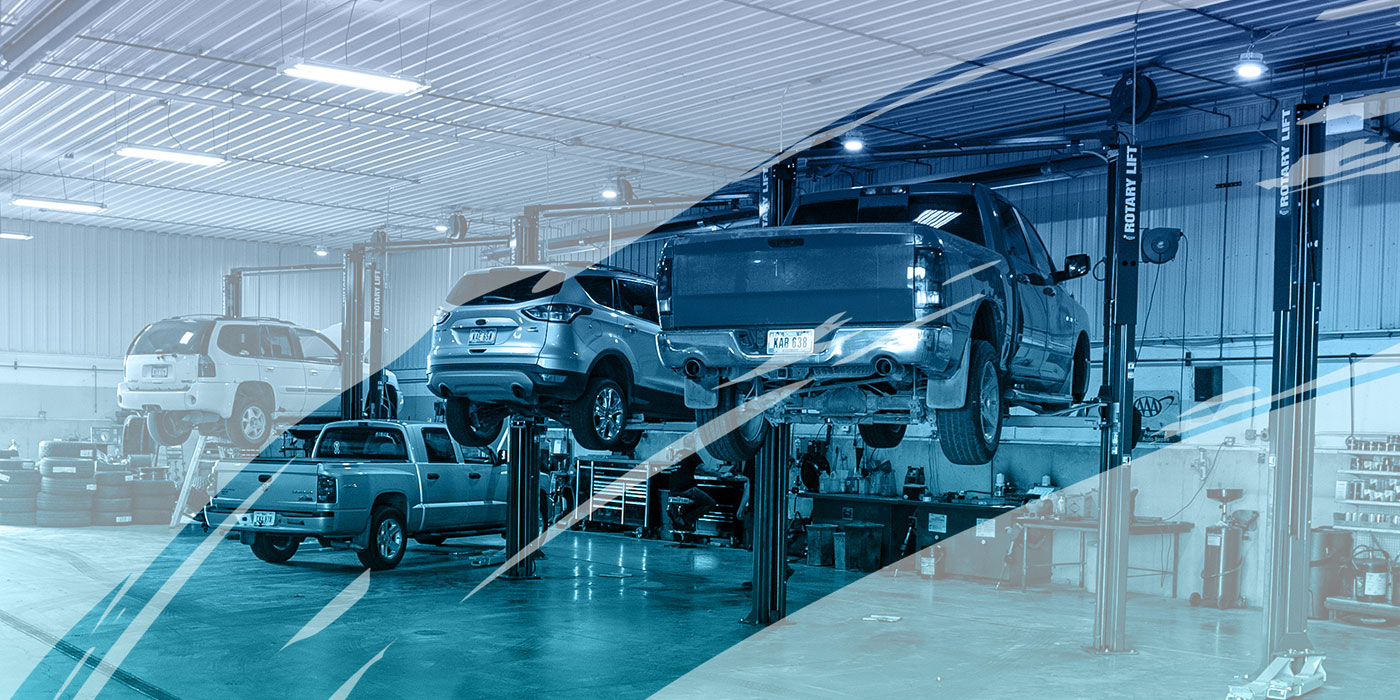Here in the Midwest region of the country, we are in the middle of the short spring season where the temperature always seems to be just right. The bay doors are open, and everyone is happy. It’s not too hot or too cold in the shop.
But as we always say in Ohio, give it an hour and the weather will change — bringing along with it the age-old quandary of bay doors open or bay doors closed. Most shop owners relinquish the decision to the techs in the shop (which can be a battle on its own), with the one simple rule: doors open, climate control off.
Hearing the term climate control in reference to the shop just might get a chuckle out of some, since the term climate control normally indicates the ability to heat or cool, and, as most of us know, air conditioning is not usually an option. In the winter we get heat, in the summer, we get the ambient temperature and maybe some fans, but that’s the extent of it.
Shop owners, don’t fret, we’re not criticizing. We understand it’s not realistic to air condition a shop in most cases, but in case you were wondering why the A/C jobs always get such a long test drive… Seriously though, there are some air conditioned shops out there and if you’re lucky enough to work at one, hang on to that gig!
There are two sides to keeping the shop comfortable throughout the year: one that falls on the shop owner and one that falls on the technician. On the shop side, the minimum you expect is heat in the winter, and it’s a common topic in the automotive industry. Why? The oil change. Since we create an almost endless supply of free fuel that we can use for heating, why not take advantage of it?
I’ve worked in shops with waste oil heaters and forced air heat both, and also the occasional add-on bay that doesn’t benefit from either, with a kerosene heater to keep it livable (cough, cough). No thanks.
I’ve heard a lot of positive opinions for waste oil heaters and some negatives as well, but all of the negatives generally stem from older systems that typically didn’t burn efficiently, emitting unpleasant odors and creating a lot of soot. This had a tendency to clog up the various workings of the unit and frequent cleaning was required.
Modern day waste oil heaters are increasingly becoming more and more popular. They no longer have the same problems with higher maintenance and lower efficiency, but instead they are very environmentally friendly thanks to burner and combustion technology that has been refined over the years. They burn clean and efficient.
Instead of paying to have your waste oil picked up, use it to your benefit.
Though the initial investment can seem costly, over time, the savings will add up. Instead of paying to have your waste oil picked up, use it to your benefit. Most companies that sell waste oil burners have savings calculators that incorporate what you are paying now for heating fuel or gas, factor in the cost of the unit and lay out a timeline for return on investment.
The only additional factor to consider is how much oil will you need to heat your shop for a winter, and do you have the ability to store it and supply it to the oil burner when needed. The benefits of waste oil heat can lose their luster in single-digit temperatures when you have all your oil stored in outside tanks and need to transfer it inside. Think this part out first.
Since you probably didn’t receive this copy of TechShop until June, if it’s not hot enough already, reading about heat probably has you sweating at just the thought of it, so let’s switch over to keeping cool.
Generally speaking, shop owners appreciate what their technicians do in the shop and when the temperature starts to rise, it’s not uncommon for them to provide a number of fans around the shop, which helps immensely. On the days when the temperatures really start to boil, the “coolest” of shop owners will see to it that there are plenty of ice-filled coolers with water and sometimes extras such as Gatorade. This not only makes a big difference in keeping technicians cool and productive, but it’s also a big morale booster.
One of my favorite features of newer toolboxes is the fact that many of them come with built-in power strips and outlets.
As a lot of technicians are making the shift to owning their own electronic equipment and scanners, their own personal climate control equipment is also finding its place in the toolbox.
One of my favorite features of newer toolboxes is the fact that many of them come with built-in power strips and outlets. Not only do these offer spots for charging cordless tools and plugging in computers, but now there’s a spot for your mini fridge too. Some shops may not have adequate refrigerator space, and as a technician we rely on our tools to get the job done. Why not rely on your own cold beverages?
Tool companies have been selling blower styles of fans for years, which have proven very popular with technicians. Whether you want it on the floor or on top of your box, you can get a high volume of air coming your way. And in the winter, there are optional heater attachments for some of them as well.
Smaller personal-style fans are also popular from tool dealers that are designed for the work center or work hutch on your toolbox … yet another good use for the power strip. And keeping consistent with modern-day electronics, many of them are low-voltage designs that plug into a USB port. Some of them also feature time and temperature LED displays. Talk about cool on top of cool.
Staying comfortable is a matter of climate, and with a little planning, most Of it is within your control.
What else can a technician do for personal climate control? Take a closer look at the gloves the next time your tool dealer stops by. Some gloves are better for winter, but some are made with specific materials that are made to keep your hands dry and cool. Of course, we all love to bug our favorite tool dealer for ball caps or beanies for winter as well.
The bottom line? Staying comfortable is a matter of climate, and with a little planning, most of it is within your control. If you have any suggestions for technicians to stay warm in the winter and cool in the summer, drop us a line and give us your tips!














